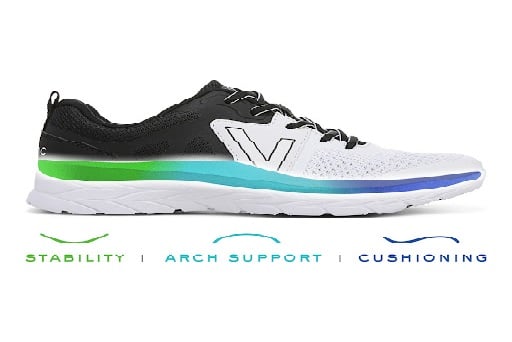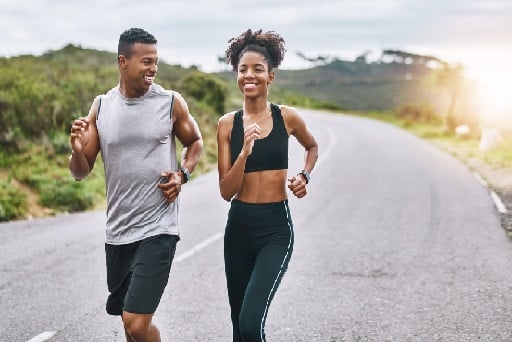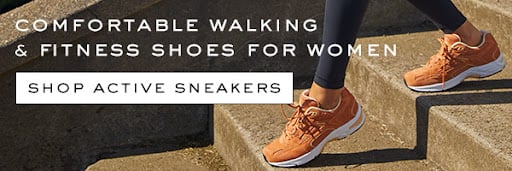Whether you are half marathon running, trail running, or road running, blisters can ruin the most euphoric of runs. One minute, you’re in your morning zone; the rising sun is lighting your way, and your pace is in lockstep with the percussion in your earbuds.
The next minute, your Achilles heel burns with every stride. A blister.
While blisters can be a painful inconvenience, there are ways to prevent them from happening in the first place. We’ve compiled a few expert strategies on how to prevent blisters when running and how to wrap existing ones—so that you can get back to sprinting toward the sun.
What Are Blisters, Anyway?
Most of us understand the basic concept of how a running blister forms. But what’s underneath the surface? Understanding them can help you more intimately define your unique foot needs to determine the best preventative solution.
Most frequently seen on feet and hands, blisters are fluid-filled bubbles that appear on the skin. They can be caused by many things, including allergies, illness, and injuries.
There are three common types of blisters:1
- Blood blisters – These are caused by pinching and trap blood pools under the skin
- Heat blisters – These are caused by sun or heat exposure, usually the result of a burn
- Friction blisters – These are your running blisters caused by friction-induced chafing
Blisters on feet from running are most often caused by improper or loosely fitting footwear as they rub against your skin. You’ll often notice them on the heel or the top and sides of your foot near the toes.
Ways To Prevent Blisters
The best way to avoid blisters is to take preventative measures that minimize the risk of developing blisters when running. If you keep these tips in mind, you’ll be running blissfully blister-free in no time.
Here are some helpful tips for keeping blisters away:
#1 Find the right shoe for your foot type
The most impactful action you can take by far to prevent blisters (and how to stop foot pain when running) is wearing the proper footwear. Your shoe should align with the contours of your foot and provide cushioning and support around the top, sides, and bottom of your feet.
If there are gaps in places where your shoe doesn’t support the foot, or if the shoe doesn’t lay correctly in certain places, this insufficient protection can lead to chafing and cause blisters. That’s why finding a shoe that fits your feet is essential.
#2 Break your shoes in over time
We recommend that you wear any new shoes—including running shoes and sneakers—for only a few hours per day until they are fully broken in to minimize pain and potential foot blisters.
Some shoes take longer than others, depending on their material and conformity to your foot. After about two weeks of regular wear, your shoes should be broken in and ready for pavement.
#3 Know your pain points
Everyone’s feet are different. Tune in to how your feet feel before and after running. Do certain areas hurt more than others?
If you have a narrow heel, you’re probably more prone to heel blisters, and if you have bunions, you may get blisters on the side of your foot or your big toe. When you’re aware of your unique pain points, your shoe specialist can better assist you in finding the right shoe for you.
#4 Prevent excess moisture
Moisture inside your shoes or socks can make your feet more slippery, increasing friction between the shoe and the foot and resulting in the kind of fabric-on-skin rubbing that leads to blisters.
Control and prevent extra moisture as best you can with products like moisture-wicking socks and footwear, and avoid running in the rain if you’re prone to foot blisters or already have one.
Runner’s Tip: If your feet are prone to extra sweat while running, try sprinkling some baby powder inside your sneaker to reduce slipping and prevent blister formation.
#5 Wear high-quality socks
When it comes to socks, material matters. Sock shape and material can mean the difference between a runner’s high and hightailing to the first aid kit.
Invest in thicker socks made of moisture-wicking material. Thicker socks provide more cushion between the shoe and foot for better protection. And materials like acrylic, nylon, and wool are designed to keep moisture at bay.
#6 Use blister protection products
If you’ve found the perfect pair of running shoes and checked all the other boxes and you’re still getting blisters, there are other options out there for prevention.
Blister protection products, like balms, are designed to decrease friction. Apply them to foot blister-prone areas before your run. Some blister protection products we recommend include:
- Moleskin
- Foot Glide Anti-Blister Balm
- Fab Feet Blisstick
- Band-Aid Friction Block Stick
- ENGO Blister Patches
#7 Stop running if you start to feel pain
You might be able to stop blisters in their tracks if you stop running (or walking) as soon as you start to feel discomfort. It may just mean you need a sock or moleskin adjustment—and taking the time to do so can save you from days of pain.
If you’re stepping out in newer shoes, do a quick 10-minute assessment of the pressure levels around your feet. Are parts of your shoe rubbing up uncomfortably in certain areas? If they are in the first ten minutes, odds are they will be on mile 8, too.
How To Take Care Of Existing Blisters To Minimize Pain
If you already have a painful blister or two, the good news is that they’re relatively easy to cover and care for. It’s easy to learn how to wrap blisters on feet for running with the right precautions to keep your skin infection-free.
The American Academy of Dermatology Association recommends the following to treat and heal blisters quickly:2
- Leave it alone – The top recommendation for blister care is to leave it be. If left to heal on its own, a blister should clear up in a few short weeks.
- Don’t pop it – Also, part of the “leave it alone” advice is don’t pop your blister (regardless of how tempting it might be). Breaking the skin barrier leaves it open to the elements and increases the risk of infection.
- Cushion the blister – Keep your feet comfortable by creating a cushion to absorb any pressure on the area while walking or running. Invest in donut-shaped cushions specifically for blisters, or make your own by cutting a hole in a moleskin pad.
- Provide a protective layer – Adding a protective top layer with wound tape or a bandage will help to keep the cushion in place if you’re walking or running. However, uncover the blister while relaxing at home to expose it to beneficial oxygen to help it heal.
- Keep it clean – Especially if the blister opens up, you will want to keep it clean and use antibiotic ointment when changing or dressing your wound. Cleaning bacteria and debris from a broken blister will help avoid infection and longer-lasting discomfort.
Tips for Finding the Right Shoe
So you’re ready to take your first step into blister-free running. Congratulations! Let’s find you the perfect footwear to fly in.
When you’re on the hunt for running shoes that don’t cause blisters, there are some specific shoe qualities to look for:
- Soft materials that provide some give with motion
- Breathability and moisture control
- Moves with your foot, not against it
- Proper fit without awkward gaps or rubbing

Tips for Sneakers
There are seemingly endless options for sneakers these days, and it can be overwhelming to pick the right pair. At Vionic, our active sneakers utilize Vio-Motion™️ footbed technology to provide the ultimate active comfort and keep your feet as pain-free as possible. Pair them with thick, moisture-wicking socks for the best in blister prevention.
Tips for Non-Running Shoes
Since you’re using your feet so much when running, it’s easy to see why blisters can be more common when you’re physically active. But keep in mind that some of the other shoes that you wear could be a potential blister trigger as well. For example: There’s a debate regarding tennis shoes vs running shoes, but take note that tennis shoes provide lateral stability (which is helpful for side-to-side movement), whereas running shoes usually have flexible forefoot to provide support during each stride.
Here’s another example: Wearing an old or uncomfortable pair of boots or heels can cause tenderness over time that may lead to more frequent blisters. Running may not be the initial cause of the blister, but enough to exacerbate the constant friction that makes the blister form.
Follow the same principles of conformity, breathability, and comfort when shopping for any kind of shoe to support your feet during every occasion.
Trust the Experts in Blister-Free Running at Vionic
We know a thing or two about discovering that dreaded blister in the middle of a jog. That’s why we set out to design footwear preventing blisters before they happen.
At Vionic, our shoes and sneakers are just what you need to keep blisters at bay. Founded in podiatry, we approach our footwear with the foot first—and plenty of fashion to follow. Each pair of shoes in our activewear line for women and men include innovative support technology so you can hit your stride with confidence—and without a blister in sight.
Sources:
- “Blisters”. Cleveland Clinic, 30 April 2021. https://my.clevelandclinic.org/health/diseases/16787-blisters
- “How To Prevent And Treat Blisters.” American Academy of Dermatology Association. https://www.aad.org/public/everyday-care/injured-skin/burns/prevent-treat-blisters
- “5 Ways to Avoid Blisters and the Best Way to Treat Them.” Cleveland Clinic, 24 December, 2020. https://health.clevelandclinic.org/5-ways-to-avoid-blisters-and-the-best-ways-treat-them/
- “Blisters.” Johns Hopkins Medicine. https://www.hopkinsmedicine.org/health/conditions-and-diseases/blisters
- “The 10 Best Blister Treatment and Prevention Products.” Runner’s World, 20 May, 2022. https://www.runnersworld.com/gear/a19574724/blister-treatment-and-prevention/
- “8 Shoe Mistakes That Could Definitely Be Causing Your Foot Pain.” Self, 18 April, 2018. https://www.self.com/story/shoe-mistakes-foot-pain
- “New shoes blues? Easy ways to keep your feet blister-free.” Today, 27 July, 2015. https://www.today.com/style/new-shoes-blues-5-easy-ways-keep-your-feet-blister-t34821
- “Why Do I Keep Getting Blisters on My Feet? How to Prevent Blisters.” University Foot & Ankle Institute, 13 September, 2022 https://www.footankleinstitute.com/blog/prevent-foot-blisters/



Leave a Reply